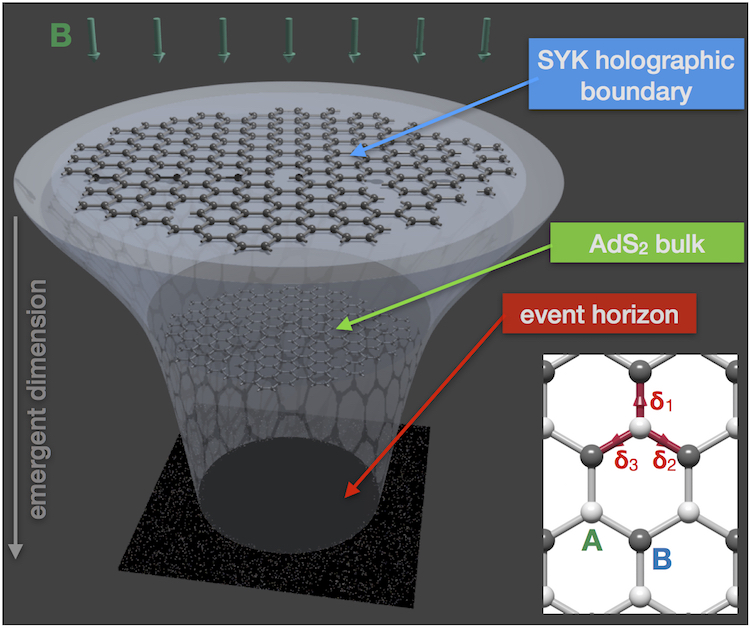"Black hole hologram" shortlisted for Physics World 2018 Breakthrough of the Year

Congratulations to PHAS Professor Marcel Franz, who led an international team (from Canada, the US, UK and Israel) in the research shortlisted as one of the "2018 Breakthrough of the Year" by Physics World. Marcel's graduate student Anffany Chen was the lead author for this project. In it, theoretical calculations are done to show that even a material as simple as a graphene flake can be used to create a quantum hologram that reproduces the signature characteristics of a black hole. The key is that electrons in the carbon material behave according to the Sachdev-Ye-Kitaev model. This research was featured in Physics World on July 30, 2018.
Remarkably, this model accurately describes the physical characteristics of black holes for large values of N (larger than 100 ideally). These characteristics include non-zero residual entropy, and fast scrambling of quantum information at the black hole singularity (the region beyond which not even light can escape the tug of its gravity).
Marcel hopes that this theory results can "motivate experimentalists to study graphene flakes of the type required to produce SYK physics".
Additional reading
"Quantum Holography in a Graphene Flake with an Irregular Boundary" Anffany Chen, R. Ilan, F. de Juan, D. I. Pikulin, and M. Franz Phys. Rev. Lett. 121, 036403 – Published 18 July 2018.